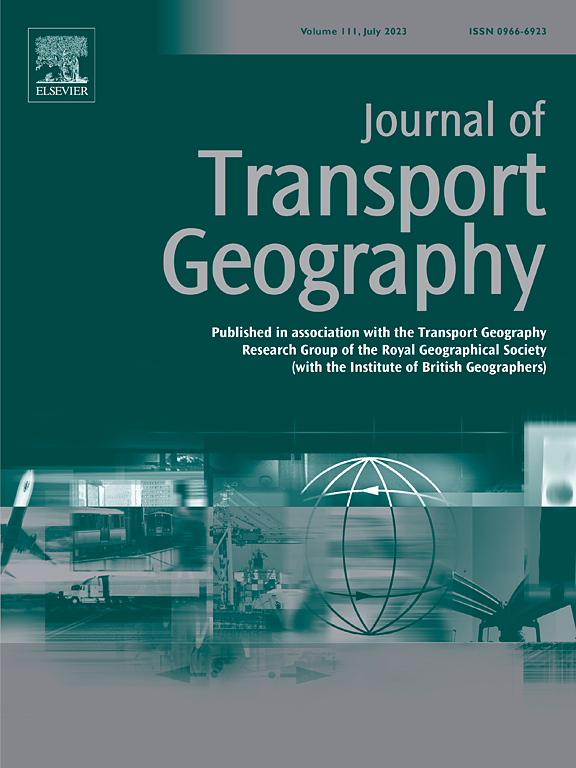“拼车”与地铁的多模式动态:来自东亚的时空格局
IF 6.3
2区 工程技术
Q1 ECONOMICS
引用次数: 0
摘要
交通网络公司提供的“拼车”服务已经获得了极大的普及,并显示出与大众快速交通整合的巨大潜力,形成有竞争力的多式联运选择。然而,关于这些服务的数据驱动研究,特别是那些使用时空分析的研究,仍然很复杂,而且尚未得到充分探索。本研究通过来自中国苏州的大规模数据集考察了拼车和地铁服务之间的复杂关系,重点是确定两种模式之间的合作和竞争动态,对包括拼车和地铁服务的多模式旅行进行分类,并揭示这些相互作用中的时空模式。分析框架采用时间序列分析、非负矩阵分解和地铁乘客始发地矩阵推理等联合方法来实现研究目标。研究结果显示,拼车出行占所有网约车出行的4.26%,而在拼车和大众捷运之间换乘的多式联运出行占总出行的13.5%,为用户提供了经济效益。这些多式联运出行主要是为了满足通勤需求,并表现出独特的、不平衡的高峰时段使用模式。空间分析表明,这些旅行大多发生在郊区和近郊地区,那里的公共快速交通覆盖范围有限,与“工业”土地使用密切相关。相应的地铁出行分布呈现出相似的空间格局。这项研究为拼车和地铁服务的整合潜力提供了新的见解,突出了关键的多模态时空模式。本文章由计算机程序翻译,如有差异,请以英文原文为准。
The multimodal dynamics of “ride-pooling” and metro: Spatial-temporal patterns from East Asia
“Ride-pooling” services provided by transportation network companies have gained substantial popularity and demonstrate significant potential for integration with mass rapid transit to form competitive multimodal transportation options. However, data-driven studies on these services, particularly those using spatial-temporal analysis, remain complex and underexplored. This study examines the intricate relationship between ride-pooling and metro services through a large-scale dataset from Suzhou, China, focusing on identifying cooperative and competitive dynamics between the two modes, classifying multimodal trips that include both ride-pooling and metro services, and uncovering spatial-temporal patterns within these interactions. The analytical framework incorporates joint methods such as time-sequence analysis, non-negative matrix factorization, and metro passenger origin-destination matrix inference to achieve the study's objectives. Findings reveal that 4.26 % of all ride-hailing trips were pooled rides, while multimodal trips involving transfers between ride-pooling and mass rapid transit accounted for 13.5 % of total trips, offering economic benefits for users. These multimodal trips primarily cater to commuting demands and exhibit distinct, imbalanced peak-hour usage patterns. Spatial analysis indicates that the majority of these trips occur in suburban and outskirt areas, where mass rapid transit coverage is limited and correlates strongly with “industrial” land use. The distribution of corresponding metro trips shows similar spatial patterns. This research provides new insights into the integration potential of ride-pooling and metro services, highlighting critical multimodal spatial-temporal patterns.
求助全文
通过发布文献求助,成功后即可免费获取论文全文。
去求助
来源期刊

Journal of Transport Geography
Multiple-
CiteScore
11.50
自引率
11.50%
发文量
197
期刊介绍:
A major resurgence has occurred in transport geography in the wake of political and policy changes, huge transport infrastructure projects and responses to urban traffic congestion. The Journal of Transport Geography provides a central focus for developments in this rapidly expanding sub-discipline.
 求助内容:
求助内容: 应助结果提醒方式:
应助结果提醒方式:


